White Goods Recycle in House Clearance
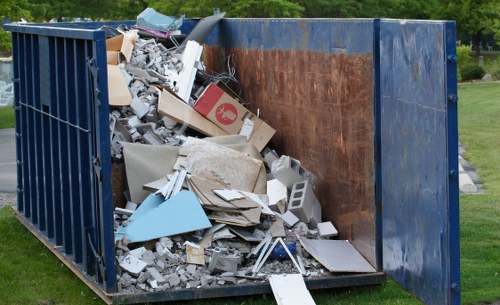
Understanding White Goods Recycling
When it comes to house clearance, one of the significant components that homeowners encounter is white goods. These include large appliances like refrigerators, washing machines, ovens, and dishwashers. Properly recycling these items is not only environmentally responsible but can also be cost-effective.
Recycling white goods involves the dismantling and processing of old appliances to recover valuable materials such as metals, plastics, and electronics. This process helps reduce the strain on natural resources and minimizes the amount of waste sent to landfills.
Furthermore, recycling white goods can sometimes qualify homeowners for financial incentives or discounts on new appliances, making it a smart choice for both the planet and your wallet.
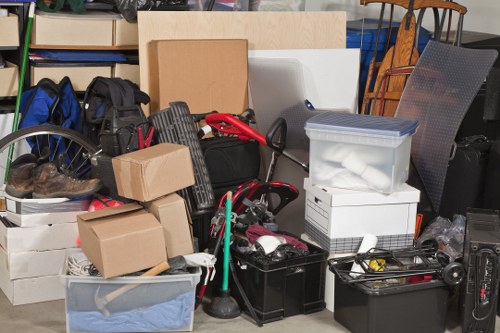
Benefits of Recycling White Goods
Recycling white goods during house clearance offers numerous advantages:
- Environmental Protection: By recycling, you help conserve natural resources and reduce pollution.
- Cost Savings: Some recycling programs offer incentives that can offset the cost of new appliances.
- Energy Efficiency: New appliances are typically more energy-efficient, leading to lower utility bills.
- Compliance: Proper recycling ensures compliance with local disposal regulations, avoiding potential fines.
Embracing white goods recycling aligns with sustainable living practices and contributes to a healthier environment.
Moreover, recycling can prevent hazardous materials found in some appliances from causing environmental harm.
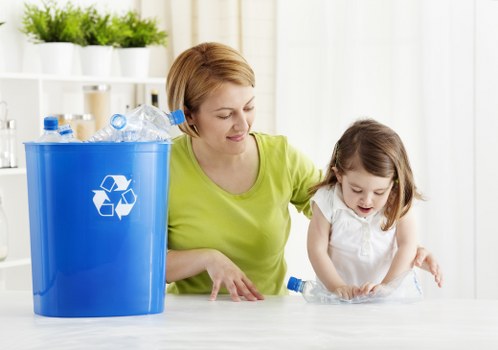
The Recycling Process Explained
Collection and Transportation
The initial step in recycling white goods is the collection and transportation of old appliances. Professional house clearance services often handle this process, ensuring that items are moved safely to recycling facilities.
Proper transportation is crucial to prevent damage to the appliances and to maintain safety standards during the recycling process.
Some regions offer specialized pick-up services for large appliances, making the recycling process more convenient for homeowners.
Sorting and Dismantling
Once at the recycling facility, white goods are sorted based on their type and material composition. This sorting is essential for the efficient extraction of reusable components.
Dismantling involves carefully taking apart the appliances to separate materials like metal, plastic, and electronic components.
This step ensures that each material can be processed appropriately, maximizing the efficiency of the recycling operation.
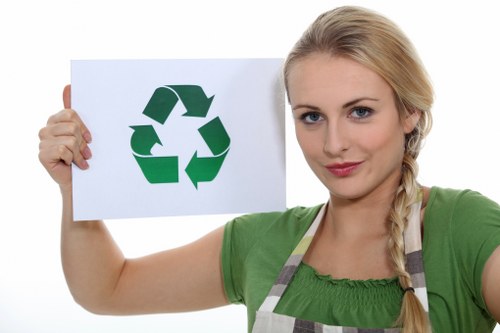
Choosing the Right Recycling Service
Selecting a reputable recycling service is paramount to ensuring that your white goods are handled responsibly. Here are some factors to consider:
- Certification: Look for services certified by recognized environmental organizations.
- Experience: Experienced companies are more likely to handle your appliances with care.
- Transparency: Reputable services provide clear information about their recycling processes.
- Customer Reviews: Positive feedback from previous customers can indicate reliable service.
Investing time in choosing the right service ensures that your white goods are recycled in an eco-friendly and efficient manner.
Additionally, some services offer additional perks like free pick-up or discounts on future appointments.
Cost Considerations
The cost of recycling white goods can vary based on several factors, including the type and condition of the appliance, and the recycling service provider.
While some services offer free recycling as part of their house clearance packages, others may charge a fee.
It's essential to obtain quotes from multiple providers to compare prices and services offered.
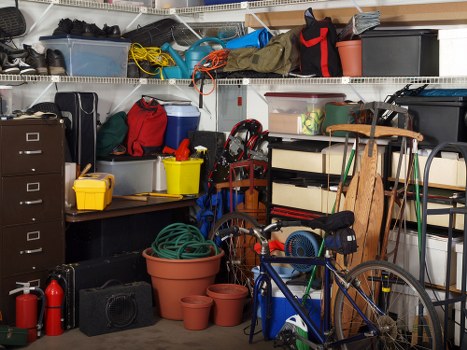
Preparing Your White Goods for Recycling
Proper preparation of your appliances can facilitate a smoother recycling process:
- Disconnect Appliances: Ensure all appliances are unplugged and disconnected from utilities.
- Remove Contents: Empty all contents, such as food from refrigerators and dishes from dishwashers.
- Secure Moving Parts: Secure doors and moving parts to prevent damage during transportation.
- Clean Appliances: Wipe down appliances to maintain hygiene during handling.
Taking these steps helps recycling professionals handle your white goods efficiently and safely.
Safety Precautions
Handling white goods involves certain safety risks, especially with older appliances. Here are some precautions:
- Avoid Sharp Edges: Use protective gloves to prevent cuts when handling dismantled parts.
- Handle Heavy Items Carefully: Employ proper lifting techniques or seek professional help to prevent injuries.
- Be Aware of Hazardous Materials: Some appliances contain hazardous substances like refrigerants or heavy metals.
Prioritizing safety ensures that the recycling process is not only effective but also risk-free.
Environmental Impact of Recycling White Goods
Reducing Landfill Waste
White goods contribute significantly to landfill waste due to their size and material composition. Recycling helps minimize the volume of waste, alleviating the pressure on landfill sites.
By diverting these appliances from landfills, we reduce the environmental footprint associated with waste disposal.
Moreover, recycling extends the lifespan of recyclable materials, promoting a circular economy.
Conserving Resources
Recycling white goods conserves essential resources by reusing materials like steel, aluminum, and plastics. This conservation reduces the need for virgin material extraction, which often involves environmentally damaging processes.
Additionally, conserving resources through recycling decreases energy consumption, further mitigating environmental impact.
Every recycled appliance contributes to a more sustainable and resource-efficient future.
Regulations and Compliance
Understanding Local Laws
Recycling white goods is subject to various local and national regulations. It's crucial to be aware of these laws to ensure compliance during house clearance.
Regulations may dictate how appliances must be disposed of, including requirements for data destruction in certain electronics.
Non-compliance can result in legal repercussions and fines, making it essential to partner with compliant recycling services.
Certified Recycling Facilities
Certified facilities adhere to environmental standards, ensuring that recycling processes do not harm the environment. Certifications like ISO 14001 indicate a facility's commitment to sustainable practices.
Choosing certified recycling centers guarantees that your white goods are handled responsibly and ethically.
Additionally, certified facilities often provide detailed documentation of the recycling process, offering transparency and accountability.
Maximizing the Benefits of White Goods Recycling
Scheduling Regular Clearances
Regular house clearances can prevent the accumulation of outdated appliances. Scheduling periodic recycling ensures that white goods are disposed of promptly and efficiently.
This practice not only keeps your home clutter-free but also promotes ongoing environmental stewardship.
Moreover, timely recycling allows homeowners to stay updated with the latest energy-efficient appliances.
Educational Initiatives
Raising awareness about the importance of recycling white goods can encourage more homeowners to participate in sustainable practices.
Educational initiatives can include workshops, informational campaigns, and collaboration with local communities to promote recycling.
By fostering a culture of recycling, we contribute to broader environmental conservation efforts.
Common Challenges and Solutions
Handling Large Appliances
Large white goods can be cumbersome to handle and transport. Partnering with professional recycling services that offer specialized equipment can mitigate this challenge.
These services ensure safe and efficient handling, reducing the risk of damage to both the appliances and your property.
Additionally, some providers offer disassembly services, simplifying the recycling process.
Cost Management
While some recycling services are free, others may incur costs. To manage expenses, consider bundling recycling with other house clearance services.
Comparing quotes from multiple providers can also help you find cost-effective recycling solutions.
Moreover, exploring local government incentives or rebates for recycling can offset additional costs.
The Future of White Goods Recycling
Technological Advancements
Emerging technologies are revolutionizing white goods recycling, making the process more efficient and effective. Innovations like automated sorting systems and advanced material extraction techniques enhance recycling capabilities.
These advancements contribute to higher recovery rates and improved environmental outcomes.
Staying informed about technological trends allows recycling services to adopt best practices and maintain industry standards.
Expanding Recycling Programs
As awareness of environmental issues grows, recycling programs are expanding to include more types of white goods and offering more accessible services to homeowners.
This expansion facilitates greater participation in recycling initiatives, leading to substantial environmental benefits.
Community-based programs and partnerships with local governments can drive the growth of effective recycling strategies.
Conclusion
Recycling white goods during house clearance is a responsible and beneficial practice that supports environmental sustainability and resource conservation. By understanding the recycling process, choosing the right services, and adhering to safety and regulatory standards, homeowners can effectively manage the disposal of large appliances.
Embracing white goods recycling not only contributes to a healthier planet but also offers financial and practical advantages. As technology advances and recycling programs expand, the process becomes even more accessible and efficient, encouraging widespread participation.
Contact us today to learn more about our white goods recycling services and make your next house clearance both eco-friendly and seamless.